ĐẶC ĐIỂM LÂM SÀNG VÀ HÌNH ẢNH CHỤP CẮT LỚP VI TÍNH CHÙM TIA HÌNH NÓN Ở BỆNH NHÂN MẤT RĂNG SAU HÀM TRÊN CÓ CHỈ ĐỊNH NÂNG XOANG KÍN
Nội dung chính của bài viết
Tóm tắt
Mục tiêu: Mô tả đặc điểm lâm sàng và hình ảnh học trên phim chụp cắt lớp vi tính chùm tia hình nón ở bệnh nhân mất răng sau hàm trên có chỉ định phẫu thuật nâng xoang kín. Đối tượng và phương pháp nghiên cứu: Đây là một nghiên cứu mô tả cắt ngang tiến hành trên 20 bệnh nhân mất một răng sau hàm trên, được chỉ định nâng xoang kín kết hợp cấy implant tức thì tại trung tâm nha khoa Hoa Sứ thành phố Vũng Tàu từ tháng 8/2024 đến tháng 1/2025. Kết quả: Nguyên nhân mất răng thường gặp nhất là nha chu (50,0%) và sâu răng (45,0%), sự khác biệt có ý nghĩa thống kê giữa hai giới (p = 0,005). Thời gian mất răng chủ yếu từ 1-5 năm (80,0%). Trên hình ảnh cắt lớp vi tính, mật độ xương loại D3 chiếm ưu thế (85,0%), chiều cao và chiều rộng xương trung bình lần lượt là 5,04 ± 0,69 mm và 10,46 ± 1,44 mm. Độ dày thành ngoài xoang trung bình là 1,09 ± 0,32 mm, đường kính động mạch trong xoang trung vị 0,6 mm, 80,0% trường hợp có góc giữa thành ngoài và thành trong xoang > 60°. Có mối tương quan thuận mức trung bình giữa chiều rộng và chiều cao xương (r = 0,348; p = 0,026). Kết luận: Phần lớn bệnh nhân mất răng sau hàm trên có đặc điểm giải phẫu và chất lượng xương phù hợp để thực hiện kỹ thuật nâng xoang kín. Việc đánh giá lâm sàng phối hợp hình ảnh học cắt lớp vi tính có ý nghĩa quan trọng trong lập kế hoạch điều trị, giúp cá thể hóa lựa chọn kỹ thuật và hạn chế biến chứng.
Chi tiết bài viết
Từ khóa
Mất răng sau hàm trên, nâng xoang kín, đặc điểm lâm sàng và cắt lớp vi tính chùm tia hình nón
Tài liệu tham khảo
2. Phạm Thu Hằng, Đàm Văn Việt, Trần Thị Mỹ Hạnh. Đặc điểm lâm sàng, X-quang bệnh nhân phẫu thuật nâng xoang hở cấy ghép implant một thì. Tạp chí Nghiên cứu Y học. 2021;145(9):241-246. doi:10.52852/tcncyh.v145i9.554.
3. Nguyễn Thúy Xuân, Lê Nguyên Lâm. Đặc điểm lâm sàng, X-quang bệnh nhân mất răng sau hàm trên có chỉ định nâng xoang hở tại Bệnh viện Trường Đại học Y Dược Cần Thơ. Tạp chí Y Dược học Cần thơ. 2023;63:211-218. doi:10.58490/ctump.2023i63.1417.
4. Al-Rafee MA. The epidemiology of edentulism and the associated factors: A literature Review. J Family Med Prim Care. 2020 Apr 30;9(4):1841-1843. doi:10.4103/jfmpc.jfmpc_1181_19.
5. Călin C, Petre A, Drafta S. Osteotome-mediated sinus floor elevation: a systematic review and meta-analysis. Int J Oral Maxillofac Implants. 2014;29(3):558-576. doi:10.11607/jomi.3206.
6. Ferraro M, Vieira AR. Explaining gender differences in caries: a multifactorial approach to a multifactorial disease. Int J Dent. 2010;2010:649643. doi:10.1155/2010/649643.
7. Hatem AE. Epidemiology and risk factors of periodontaldisease. Periodontal Diseases-A Clinician's Guide. 2012;213-230. doi:10.5772/29272
8. Kher U, Ioannou AL, Kumar T, et al. A clinical and radiographic case series of implants placed with the simplified minimally invasive antral membrane elevation technique in the posterior maxilla. J Craniomaxillofac Surg. 2014 Dec;42(8):1942-1947. doi:10.1016/j.jcms.2014.08.005.
9. Leblebicioglu B, Ersanli S, Karabuda C, Tosun T, Gokdeniz H. Radiographic evaluation of dental implants placed using an osteotome technique. J Periodontol. 2005 Mar;76(3):385-390. doi:10.1902/jop.2005.76.3.385.
10. Otero AIP, Fernandes JCH, Borges T, Nassani L, Castilho RM, Fernandes GVO. Sinus lift associated with leucocyte-platelet-rich fibrin (second generation) for bone gain: a systematic review. J Clin Med. 2022 Mar 28;11(7):1888. doi:10.3390/jcm11071888.
11. Resnik R. Misch's contemporary implant dentistry, 4th edition. Elsevier Health Sciences. 2021.
12. Summers RB. The osteotome technique: Part 3--Less invasive methods of elevating the sinus floor. Compendium. 1994 Jun;15(6):698, 700, 702-4 passim.


